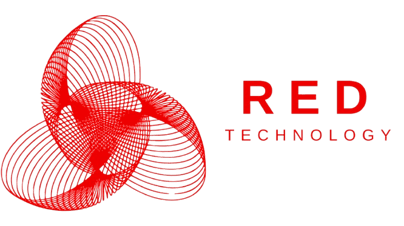Digital Twin Solutions
Welcome to the Era of Spatial Computing
Why choose RED Technology for Digital Twins?
With a deep understanding of both the physical and digital aspects of systems, RED Technology brings a unique ability to develop and deploy advanced Digital Twin solutions tailored to your specific industry needs. Our approach combines cutting-edge technologies—such as IoT, AI, and real-time analytics—to create accurate, responsive virtual replicas of physical assets and processes. This enables businesses to simulate, monitor, and optimize operations with unprecedented precision, reducing costs, improving efficiency, and predicting potential issues before they arise.
What sets RED Technology apart is not just technical expertise, but a client-focused mindset. We work closely with stakeholders to ensure the Digital Twin implementation aligns with your business goals and integrates seamlessly into your existing infrastructure. Whether you're looking to enhance product lifecycle management, streamline manufacturing, or improve asset performance, RED Technology delivers scalable and future-proof solutions. By choosing us as your Digital Twin partner, you're investing in innovation, reliability, and a strategic edge in your digital transformation journey.
Our Current Project
Digital Twin Technology for Collaborative Robots in the Manufacturing Industry in Mauritius
In collaboration with The University of Mauritius (UOM)
Problem Statement: Over the past decade, Mauritius's manufacturing sector has declined significantly due to labour shortages, rising production costs, and increased global competition. As of 2023, the manufacturing sector in Mauritius contributed approximately 11.05% to the country's Gross Domestic Product (GDP), underscoring its significant role in the national econom. The sector experienced a 2.1% growth in 2023, an upward revision from the previously estimated 1.4%. This improvement was primarily attributed to increased activity in food processing, which grew by 4.3%, and other manufacturing activities, which expanded by 6.7%. The manufacturing sector's growth is anticipated to decelerate in 2025, aligning with the broader economic trend. While specific projections for manufacturing are not explicitly stated, the overall industry sector, which includes manufacturing, is expected to grow by 3.8% in 2025, down from 8.1% in 2024. This projected slowdown is because the manufacturing industry, both globally and locally, are facing a shortage of skilled labour and increased pressure to maintain productivity despite workforce constraints. According to recent studies, manufacturing sectors in both developed and developing countries are struggling to attract and retain workers, making the deployment of cobots a practical and strategic response to labour shortages.
Another major concern is the persistent lack of skilled labour, driven by demographic challenges and emigration, which has forced firms to depend more on foreign workers—though immigration constraints and global talent competition limit this solution. Additionally, escalating energy costs, inflation, and currency fluctuations have raised operational expenses, with labour costs growing faster than productivity.
Collaborative Robots (Cobot) take care of these problems by supporting the skilled human operators in tasks that are difficult to automate. Hence cobots work together with humans to make technical processes more efficient. However, the full potential of cobots cannot be realized without advanced tools for real-time monitoring, predictive analysis, and system optimization.
This is where Digital Twin (DT) technology becomes critical. A Digital Twin is a real-time, virtual replica of a physical asset, capable of simulating performance, predicting failures, and optimizing operation. When applied to collaborative robots, DTs can simulate interaction scenarios, detect anomalies, reduce unplanned downtime, and optimize energy consumption through data-driven insights. This leads to not only increased operational efficiency, but also significant energy savings by ensuring that robots operate at optimal conditions and usage patterns.
Despite these advantages, there is a significant gap in the practical implementation of integrated Digital Twin frameworks for cobots in industrial environments. Most existing systems are either fragmented, lack real-time data synchronization, or fail to account for the complexity of human-robot collaboration in dynamic production settings. Furthermore, the use of Digital Twins in cobot systems for ensuring worker safety, addressing labour shortages, effective task allocation and reducing energy consumption has not been sufficiently explored.
